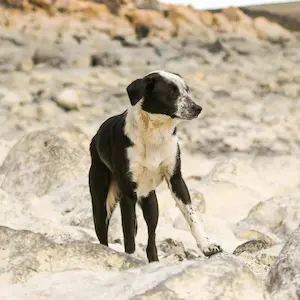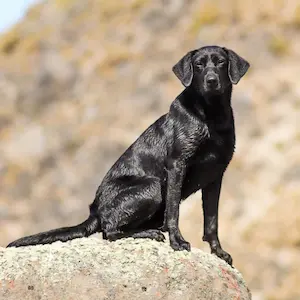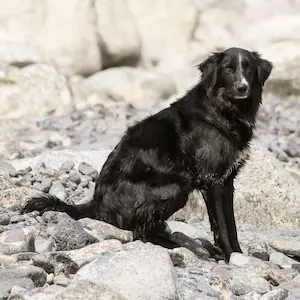Context and objectives
Although one of the main threats to fauna globally is domestic animals—particularly feral dogs or those kept irresponsibly—, today these same animals also play a relevant role in conservation. Their learning capacity and extraordinary sense of smell allow for the development of different approaches and methods applied to management and monitoring strategies.
Thanks to their powerful olfactory capacity, dogs can distinguish a wide variety of odors in minimal concentrations and learn to signal them according to the type of training received. Several studies have shown that a trained dog can cover up to five times the distance that a human would cover in 70% of the time, with a detection efficiency between two and four times greater. Through a systematic training process, the possibility of impact on native fauna and the environment is minimized. In addition, their gregarious behavior has made them important allies for the protection of specific animal groups, such as domestic livestock.
Currently, we are working with search dogs to locate elusive species or those with very low-density populations, such as endangered species and invasive exotic species in early stages of dispersal. The main objective is to complement the control systems for the American mink and to train dogs specialized in the detection of huillines. As we increase the number of dogs trained by our team, we seek to expand the diversity of actions in which they can play an active role in conservation.
Our actions
- Training search dogs for the detection of invasive species, such as the American mink, focusing on different training strategies, following the environmental needs and abundance of the focal species. Training search dogs for endangered species of low density and difficult detection, such as the huillín.
- All dogs are friendly to the environment, as they are trained to be respectful of the fauna.
Protagonists




Habitat and behavior
Although search dogs are trained to identify specific olfactory traces, the environment in which they work, as well as the climatic conditions at the time of the search, interfere with their performance. Each time we change the environment with one of them (from steppe to forest, for example), we must initially accustom them to searching in this new context.
Curiosity
Dogs can distinguish more than 1,000 scents and can differentiate between very similar odor mixtures, even if they differ by only 1 component. For example, our dogs are trained to track mink (the individual) or their feces.
Threats
Dogs in wild environments must always be well-managed. We ensure that our dogs, in addition to assisting us in searches, behave safely in wild environments, ruling out the possibility of affecting the fauna of the places in which we work.





